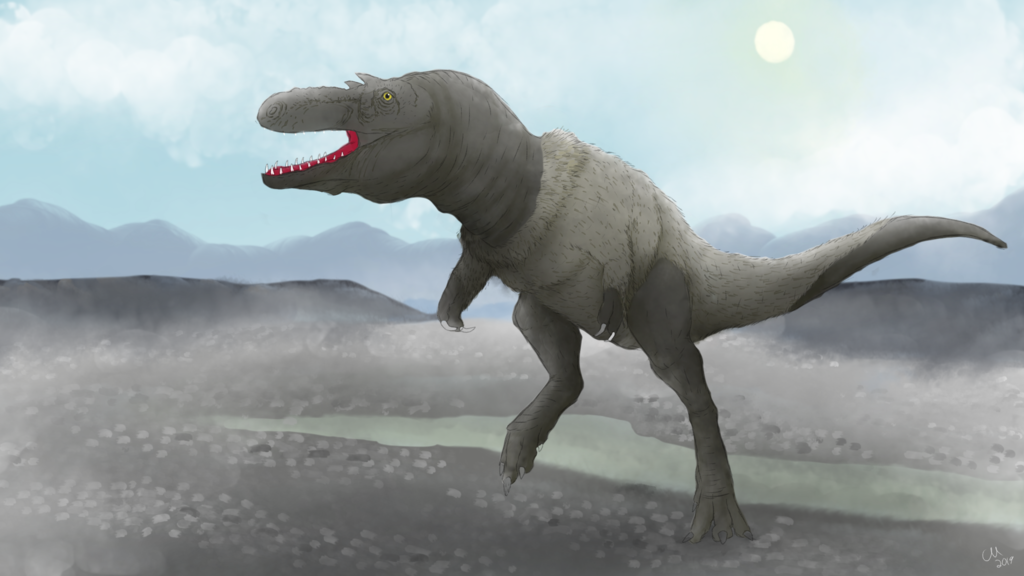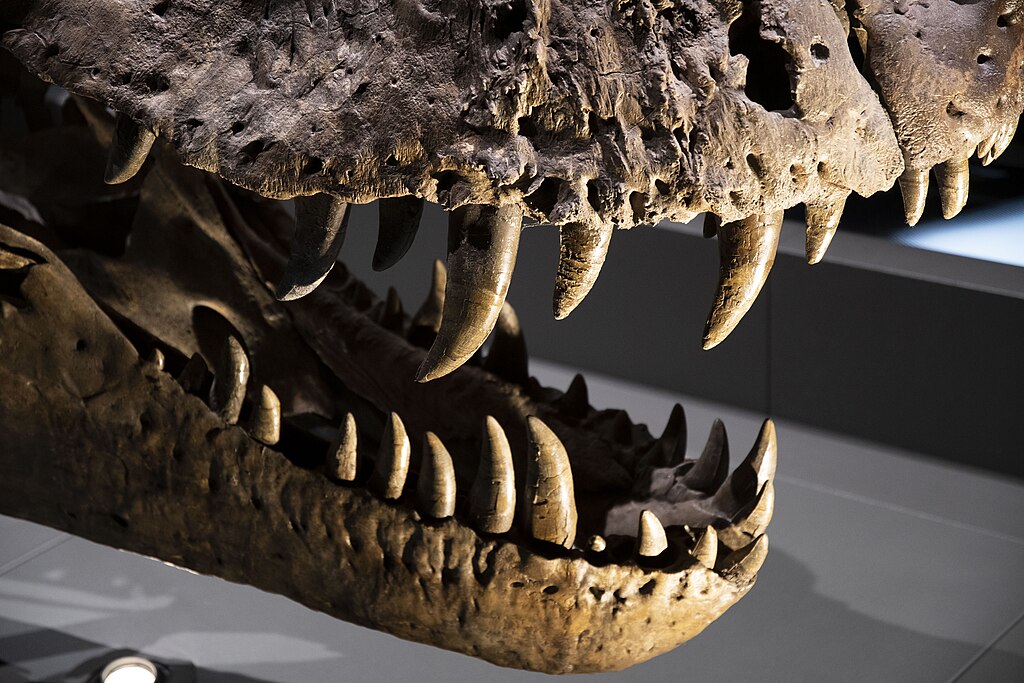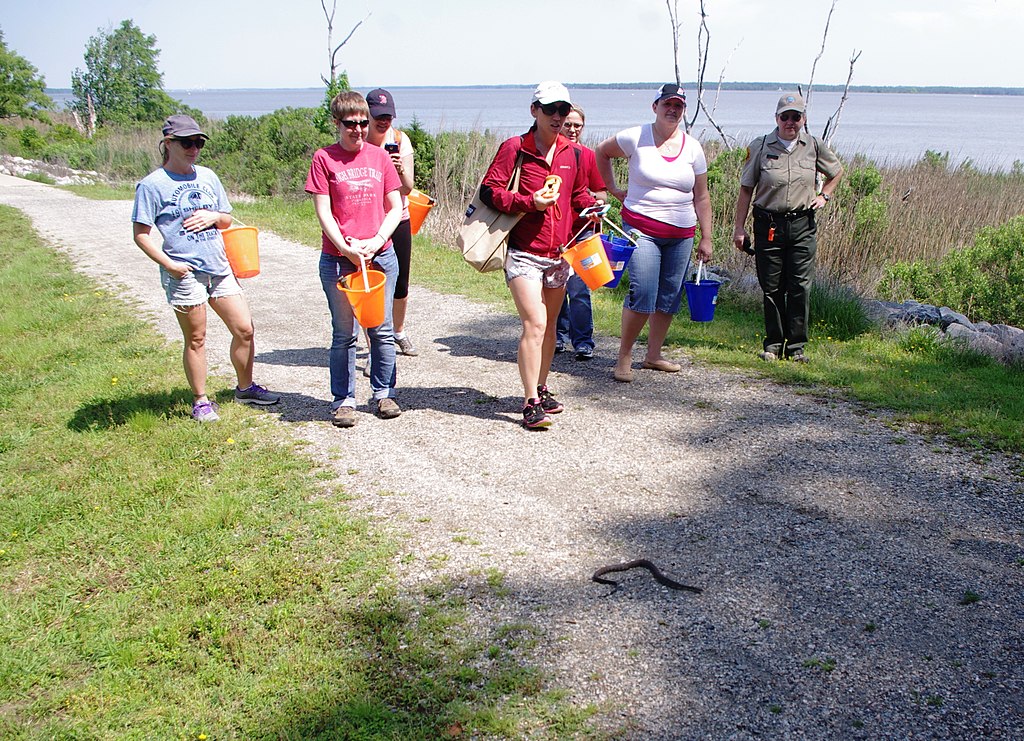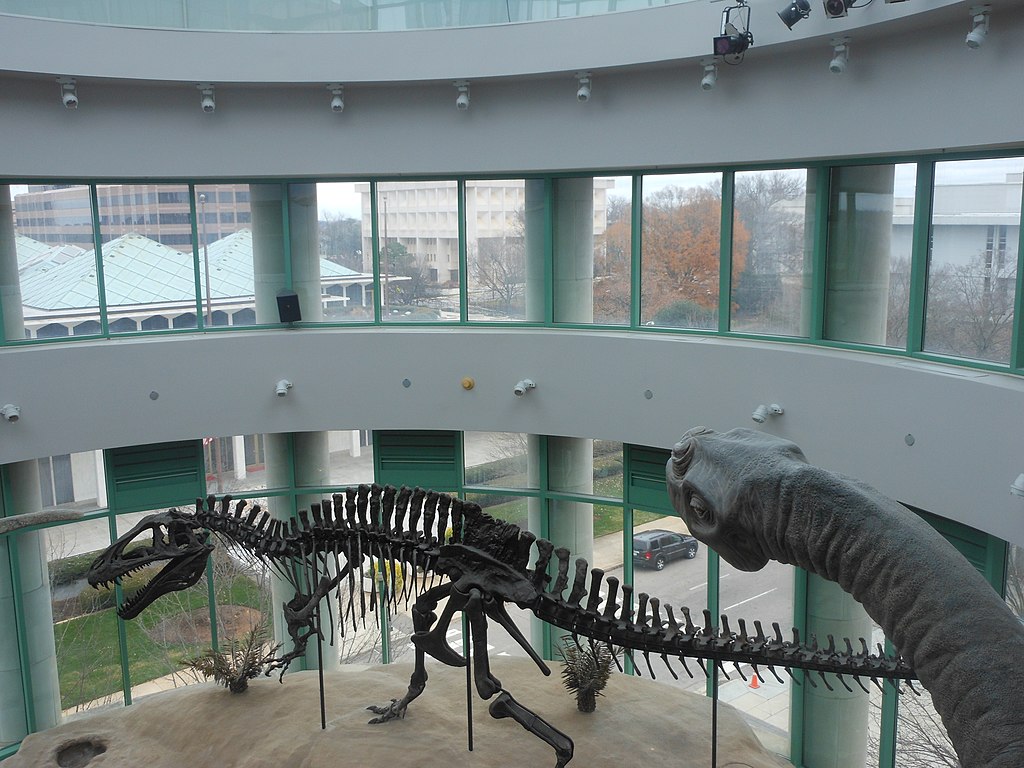The Cretaceous Period, spanning approximately 145 to 66 million years ago, remains one of the most fascinating chapters in Earth’s prehistoric narrative. Within this ancient world roamed some of the most fearsome predators ever to walk the planet. Dr. Lindsay Zanno, a renowned paleontologist and head of paleontology at the North Carolina Museum of Natural Sciences, has dedicated her career to uncovering these ancient hunters and telling their stories. Her groundbreaking fieldwork, innovative research approaches, and commitment to public science education have revolutionized our understanding of Cretaceous predators and their ecosystems. This article explores Dr. Zanno’s remarkable career, her significant discoveries, and how her work continues to reshape our understanding of prehistoric life.
The Making of a Modern Paleontologist

Dr. Lindsay Zanno’s journey into paleontology began with a childhood fascination with dinosaurs that eventually evolved into a serious scientific pursuit. She earned her Ph.D. from the University of Utah, where she specialized in the study of theropod dinosaurs—the group that includes familiar predators like Tyrannosaurus rex and Velociraptor, as well as the ancestors of modern birds. Her academic background uniquely combines expertise in evolutionary biology, anatomy, and geology, allowing her to approach paleontological questions from multiple scientific angles. This interdisciplinary approach has become a hallmark of her research methodology, enabling her to draw connections across scientific fields that others might miss. Throughout her career, Zanno has maintained that understanding ancient predators requires examining not just their fossils but the entire ecosystems in which they lived.
The Siats Meekerorum Discovery

Perhaps one of Dr. Zanno’s most significant discoveries came in 2013 when she and her team announced the discovery of Siats meekerorum, a massive carnivorous dinosaur from the Cedar Mountain Formation in Utah. This predator, measuring over 30 feet long, represented a previously unknown apex predator that roamed North America approximately 100 million years ago. The discovery helped fill a significant gap in our understanding of North American predator evolution, revealing that large carcharodontosaurid dinosaurs—not tyrannosaurs—dominated the continent’s ecosystems during the middle Cretaceous period. Siats was named after a man-eating monster from the mythology of the Ute Native American tribe and represents one of the largest predators ever discovered in North America. This discovery fundamentally altered scientific understanding of Cretaceous predator dynamics and ecological hierarchies in prehistoric North America.
Exploring the Cedar Mountain Formation

The Cedar Mountain Formation in Utah has become one of Dr. Zanno’s primary field sites, yielding numerous important discoveries beyond Siats. This geological formation spans the Early to mid-Cretaceous period and preserves an exceptionally diverse ecosystem that existed approximately 125 to 98 million years ago. Zanno’s systematic exploration of this region has uncovered multiple new predatory dinosaur species, providing crucial insight into a poorly understood time period in North American dinosaur evolution. Her fieldwork in this region is particularly challenging due to the harsh desert conditions and the difficult terrain, requiring expeditions to bring in water, endure extreme temperatures, and navigate remote areas. Despite these challenges, Zanno’s persistence has paid off with discoveries that have filled major gaps in the fossil record, particularly regarding the transition period when tyrannosaurs rose to dominance.
Moros Intrepidus: The Harbinger of T. Rex

In 2019, Dr. Zanno announced another groundbreaking discovery: Moros intrepidus, a small but significant tyrannosaur ancestor that lived approximately 96 million years ago. Standing only about four feet tall at the hip and weighing around 170 pounds, Moros was diminutive compared to its famous descendant T. rex, yet it represents a crucial evolutionary link. The name “Moros intrepidus” translates to “harbinger of doom,” signifying this animal’s place in history as a forerunner to the tyrannosaur dynasty that would eventually dominate North American ecosystems. This discovery helped resolve a 70-million-year gap in the fossil record of North American tyrannosaurs, demonstrating that these dinosaurs started small before evolving into the massive apex predators that would rule at the end of the Cretaceous period. The Moros finding also provided valuable evidence about how climate change and continental drift influenced dinosaur evolution and migration patterns across ancient landmasses.
New Methods in Paleontological Research

Dr. Zanno’s research approach extends beyond traditional fossil collection and classification, incorporating cutting-edge technologies and methodologies that have revolutionized paleontological research. She regularly employs CT scanning technology to examine the internal structures of fossils without damaging them, revealing details about brain cavities, sinuses, and other features that would otherwise remain hidden. Her lab also utilizes sophisticated computer modeling to estimate bite forces, running speeds, and other biomechanical aspects of extinct predators, creating more accurate reconstructions of how these animals lived and hunted. Additionally, Zanno integrates molecular paleontology techniques to study ancient proteins and other biomolecules that sometimes survive in exceptionally preserved fossils. These innovative approaches have allowed her team to extract maximum information from fragmentary remains, providing unprecedented insights into the biology and behavior of Cretaceous predators.
The Ecological Context of Predation

Understanding predators in isolation tells only part of the story, which is why Dr. Zanno places significant emphasis on studying the broader ecological contexts in which these animals lived. Her research frequently examines the relationships between predators and their prey, revealing complex food webs and ecological interactions in Cretaceous ecosystems. By analyzing tooth wear patterns, stomach contents, and coprolites (fossilized feces), Zanno can determine the dietary preferences and hunting strategies of ancient carnivores with remarkable precision. This ecological approach has led to important insights about predator-prey ratios, resource partitioning between different predator species, and how environmental changes affected predator communities over time. Zanno’s work demonstrates that Cretaceous ecosystems were not static but dynamic systems that shifted dramatically as climate conditions changed and new species evolved or went extinct.
The Rise of Tyrannosaur Dominance

One of the most compelling narratives in Dr. Zanno’s research concerns the rise of tyrannosaurs from relatively small, secondary predators to the dominant carnivores of Late Cretaceous North America. Her discoveries have helped establish a timeline for this transition, which appears to have occurred after the extinction of the carcharodontosaurids like Siats. Through careful analysis of multiple fossil sites spanning different time periods, Zanno has documented how tyrannosaurs evolved larger body sizes, more powerful jaws, and enhanced sensory capabilities as they moved into apex predator niches. This research suggests that tyrannosaur dominance was not inevitable but resulted from a complex interplay of evolutionary adaptations, environmental changes, and ecological opportunities created by the disappearance of other large predators. The story of tyrannosaur ascendancy represents one of the most dramatic power shifts in the history of terrestrial ecosystems, highlighting the dynamic nature of evolutionary competition.
Public Engagement and Science Communication

Beyond her scientific contributions, Dr. Zanno has distinguished herself as a passionate advocate for public science education and engagement. As head of paleontology at the North Carolina Museum of Natural Sciences, she has pioneered innovative approaches to making paleontological research accessible to the public. The museum’s visible lab concept allows visitors to watch scientists prepare fossils in real-time and ask questions about the process, breaking down barriers between scientists and the public. Zanno frequently participates in public lectures, documentary interviews, and outreach programs designed to spark interest in paleontology among diverse audiences, particularly young people and underrepresented groups. Her commitment to open science extends to digital platforms, where she shares research updates and paleontological insights through social media and online resources. Through these efforts, Zanno has helped transform how the public engages with paleontological science, moving beyond passive consumption to active participation in the scientific process.
The Hunt for Microfossils

While giant predators like Siats capture public imagination, Dr. Zanno also emphasizes the importance of microfossil research in understanding Cretaceous predator diversity. Many small to medium-sized predators left sparse fossil records, with their remains often consisting of teeth, fragmentary bones, or isolated skeletal elements that require specialized collection techniques. Zanno’s team employs painstaking methods including screen-washing, where sediment is carefully sifted through fine mesh screens to recover tiny fossils that would otherwise be overlooked. These microfossils reveal a hidden world of predatory diversity, including small dinosaurs, primitive mammals, and reptiles that played crucial roles in Cretaceous food webs. The microfossil record has allowed Zanno to document dramatic shifts in predator communities over time, providing a more nuanced understanding of ecosystem dynamics than would be possible from large specimen discoveries alone.
Integrating Paleontology with Modern Ecology

Dr. Zanno’s research frequently draws connections between ancient predator-prey dynamics and modern ecological principles, creating a bridge between paleontology and contemporary conservation biology. By studying how Cretaceous predators responded to climate shifts, habitat fragmentation, and other environmental changes, her work provides potential insights into how modern predators might respond to similar challenges. Zanno has collaborated with ecologists to develop models that compare ancient and modern predator-prey ratios, territory sizes, and population dynamics, revealing both surprising similarities and important differences. These comparative studies help contextualize modern biodiversity crises within Earth’s longer ecological history, potentially informing conservation strategies for threatened predator species today. The integration of paleontological data with modern ecological theory represents an emerging frontier in biological science, with Dr. Zanno at the forefront of this interdisciplinary approach.
Mentorship and Building the Next Generation

Throughout her career, Dr. Zanno has demonstrated a profound commitment to mentoring the next generation of paleontologists, creating opportunities for students at all levels to participate in genuine research. Her field expeditions typically include undergraduate and graduate students who receive hands-on training in fossil collection, documentation, and analysis techniques under real research conditions. In her laboratory, Zanno mentors students through the complex process of describing new species, conducting comparative anatomical studies, and preparing research for peer-reviewed publication. Many of her former students have gone on to establish successful careers in paleontology, museum science, and related fields. Zanno particularly emphasizes creating pathways for women and individuals from underrepresented groups to enter paleontological research, helping to diversify a field that has historically lacked demographic diversity. Her mentorship approach focuses not just on technical skills but on fostering scientific creativity, ethical research practices, and effective science communication abilities.
Future Horizons in Predator Paleontology

Looking toward the future, Dr. Zanno’s research program continues to evolve, embracing new technologies and exploring new geographic regions in the search for Cretaceous predators. Her team is increasingly incorporating genetic approaches, including ancient DNA and protein analysis, to clarify evolutionary relationships between extinct predator groups and their modern descendants. Zanno has also expanded her fieldwork beyond North America to comparative sites in other continents, seeking to understand how predator evolution differed across ancient landmasses with different geological and climatic histories. Upcoming projects include detailed investigations of sensory capabilities in predatory dinosaurs, including vision, smell, and hearing adaptations that made them effective hunters. Additionally, Zanno is developing new citizen science initiatives that will allow broader public participation in paleontological research through digital platforms and community-based fossil monitoring programs. These forward-looking approaches ensure that the hunt for new Cretaceous predators will continue to yield important scientific insights while engaging ever wider audiences.
The Legacy of Discovery

Dr. Lindsay Zanno’s contributions to our understanding of Cretaceous predators represent more than just new entries in the catalog of dinosaur species—they fundamentally reshape our perspective on prehistoric ecosystems and evolutionary processes. Her discoveries of Siats, Moros, and other predators have filled critical gaps in the fossil record, allowing scientists to trace the intricate story of how different predator groups rose, fell, and sometimes rose again over millions of years of Earth history. Beyond the specimens themselves, Zanno’s methodological innovations have expanded the toolkit available to paleontologists worldwide, demonstrating how integrative approaches can extract maximum information from the fossil record. Perhaps most importantly, her commitment to public engagement has ensured that these scientific advances don’t remain confined to academic circles but become part of our shared cultural understanding of life’s history on Earth. As both a scientist and science communicator, Dr. Zanno exemplifies how modern paleontology can bridge the gap between rigorous research and public fascination with prehistoric life.
The hunt for Cretaceous predators continues to evolve under Dr. Lindsay Zanno’s leadership, combining traditional paleontological fieldwork with cutting-edge technologies and innovative research approaches. Her discoveries have fundamentally altered our understanding of predator evolution during this crucial period of Earth history, revealing complex patterns of ecological succession and evolutionary adaptation. As new specimens emerge from ancient rocks and new analytical techniques become available, we can expect our picture of Cretaceous predator communities to become increasingly detailed and nuanced. Through her dual commitment to scientific excellence and public engagement, Dr. Zanno ensures that these prehistoric predators don’t remain locked in stone but come alive in our collective imagination and scientific understanding.



